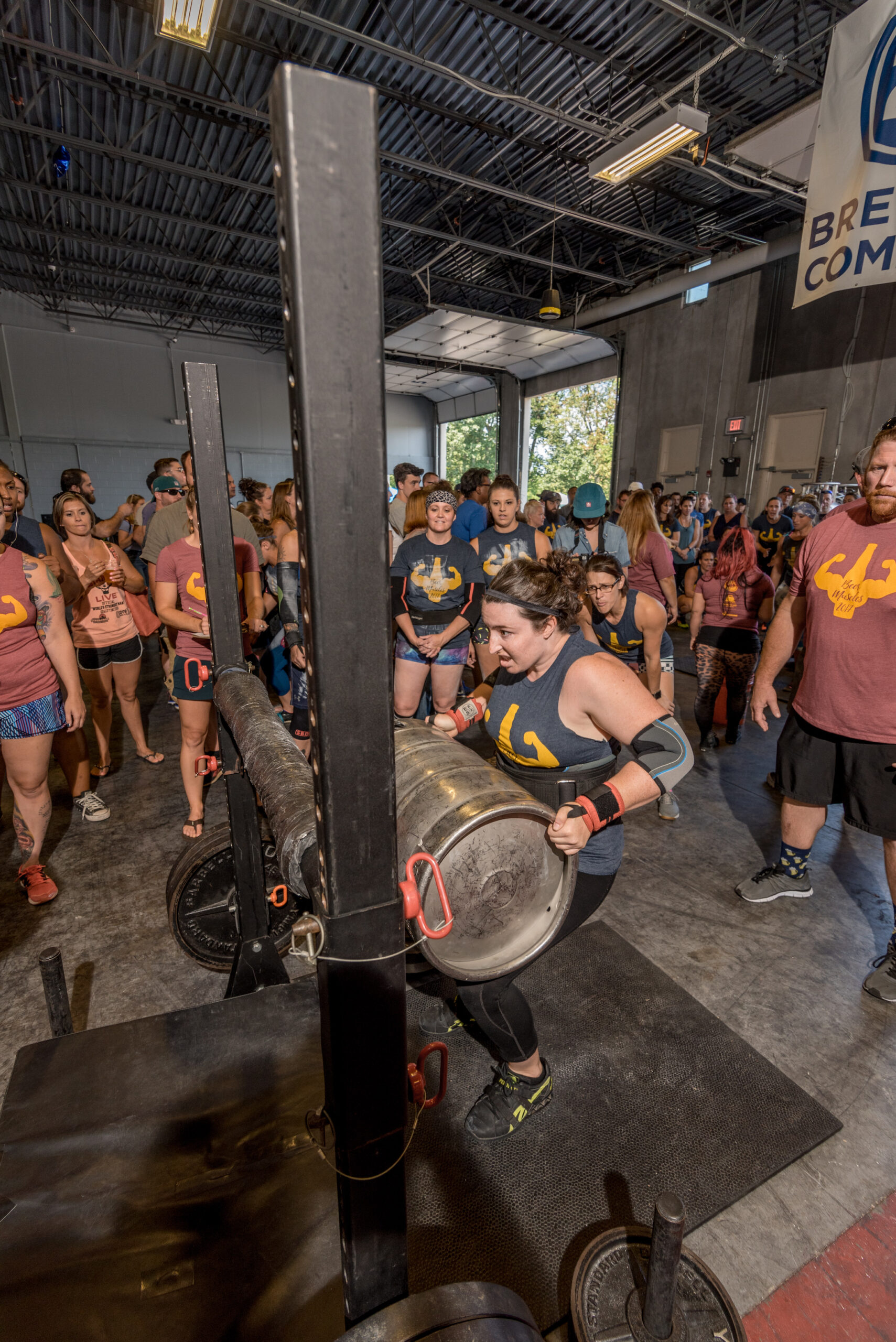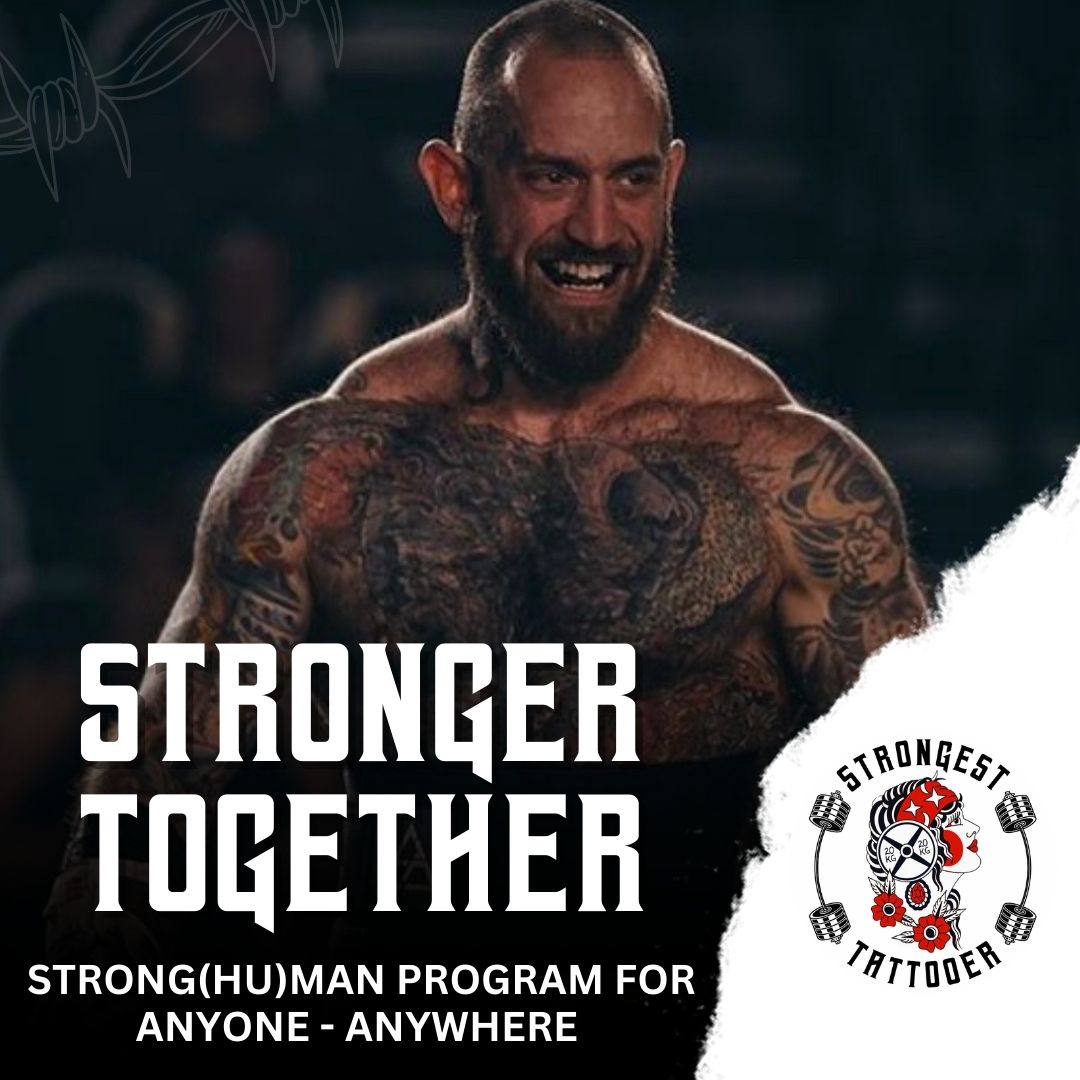
In my humble opinion, choosing event weights is one of the hardest – and most critical – parts of promoting a strongman competition. If you go too light, people are bored and tired and complaining of “rep fests.” If you go too heavy, too many people zero, and then it’s sad to compete and sad to watch and no one is happy.
To be clear, I have definitely messed this up. And you will mess it up. And I will probably mess it up again in the future. It’s nearly impossible to control all the involved variables and predict exactly who will show up and how they’ll perform.
That said, there are definitely steps you can take to minimize your risk of picking shitty weights and give your show the best chance to be successful and fun.
Step 1: Decide What “Level” the Show Will Be
For the purpose of this article, a “local show” is a standard competition that has Novice and Open classes. Some athletes are using the show to qualify for higher levels, but most people are there because they want to push themselves and have a good time.
A “high-level competition” is a show that athletes have qualified for, such as Regionals, Nationals, or Worlds. These athletes have already proven to be the best at the local level and are now competing against other top-tier athletes.
If your competition is for new to intermediate lifters, trend on the lighter side. If it’s for intermediate to advanced lifters, trend on the moderate to heavy side. If it’s a high-level show, go heavy.
Step 2: Program for Your Target Demographic
At a high-level competition, program for the top 5 athletes. There will always be exceptions, but in general, the top 5 should finish (or nearly finish) all the events. Everyone else competing should be striving to keep up with those athletes. There will be zeros and DNFs, and that’s okay. In many ways, these shows are easier to choose weights for because you have a better sense of what the participating athletes are capable of, and you want to really push their limits.
Local shows are more complicated because the range of skill and strength among participants can be pretty broad, and you won’t know many of the athletes ahead of time.
This might be an unpopular opinion, but for local shows I think the smartest move is to program for the middle of the pack. The goal at a local show should be giving athletes a good well-rounded experience. Weights should be heavy enough that competitive athletes’ victories warrant qualification to higher-level events, but light enough that intermediate and newer athletes can still successfully participate. If you’re running a local show toward the beginning of the season and your weights are comparable to Nationals, your people are gonna have a bad time.
On each event, you can expect a couple people to blow it out of the water and a couple people to zero. Most athletes should fall somewhere in the middle and be able to complete (or at least not zero) most events.
This does mean some athletes will have a “rep fest” on some events. That’s okay. Those athletes are likely using this competition to qualify for a higher-level competition where they can really test their limits at heavier weights.
Step 3: Do Your Research
This is by far the most important step. DO NOT SKIP IT. Find past competitions that have done events similar to what you’re planning and look at the weights they used. Using past shows instead of future ones means you can also look at the results and see if the weights used were appropriate or not.
Iron Podium has a searchable archive (just use the filter and check the “archives” box). Results for all the Strongman Corporation competitions and United States Strongman competitions can be found on their respective websites as well.
You can also search Iron Podium’s upcoming competitions by event by typing an event name (eg. “log”) in the search bar. Although you won’t be able to see how athletes fared using those weights (because the competitions haven’t happened yet), it’s still a great tool to quickly see what weights comparable shows are using.
I’ve also gone super Secret Squirrel and searched YouTube for videos of people doing specific events, noted what competition it was, then looked up the weights and results for that competition.
This all might seem like overkill, but screwing up your event weights can tank an otherwise really positive and successful show. Time invested now will result in a smoother competition and less time making last-minute adjustments later.
Step 4: Test Your Weights and Implements
This should go without saying, but it’s incredible how often promoters don’t test their implements and weights prior to a competition. So here we are, recommending that you do so.
Ideally you want to test weights before publicly announcing them, but that’s not always possible. Do your best. At a bare minimum, you should have athletes in a few different classes test your planned competition weights on your actual competition implements at least a couple weeks prior to the event.
It’s extra helpful if you know the “test subjects” personally, so you can gauge if they’re going to be good representative testers for their respective classes. In other words, if they’re particularly good (or bad) at a specific event, factor that into your decision making. You don’t want to base local-level weights on a nationals-level athlete.
“Official” competition training days are a great tool here. About 2-3 weeks prior to the competition, host a training day where you set up all 5 of the competition events for anyone to come try out. You’ll get to see a variety of athletes use all the implements at or near comp weights. Plus you can use this day as a dry run for making sure implements (especially custom ones) work properly, making and testing loading charts, spot rules/standards things you hadn’t thought of before, etc. Bonus: If you’re a procrastinator (like me), it’s also a good way to make sure your implements are all built and ready to go with plenty of time before comp day.
Step 5: Check Your Blindspots
If you mostly program for, work with, and/or train with people of the same gender, size, or experience level, make sure you reach out to people that are not in that demographic for feedback. At the risk of overgeneralization, I’ll say that men often don’t have a great concept of how to choose weights for women (and vice versa). And athletes in weight classes at the heaviest and lightest ends of the spectrum often don’t have a great concept for how to choose for the opposite side of the scale.
Identify and address your blindspots. There are plenty of experienced promoters, coaches, and athletes who will look over your weights for you and catch potential oversights. You just have to ask.
Miscellaneous Notes
Think about how the events in a competition interact with and affect each other. For example, if you have a grip-heavy competition, you might need to make some of the events a little lighter than normal (especially ones later in the day) because once grip is gone it’s gone for good. This is also very closely related to smart event selection, which we have a full-length article on here.
If you’re doing a truck pull, please, for the love of all that is holy, test the surface first. Make sure it’s flat and free from debris. The easiest way to do this is to put a vehicle in a few spots along where you plan to pull, put the vehicle in neutral, and see if it rolls. If it does, find a new spot.
Make sure you factor in the competition surface and environment. For example, the same sled will move very differently on concrete than it will on turf, and it can be affected by temperature and humidity. Also, plan ahead for things like slippery floors (like in a convention center) and rain.
Need Help?
Reach out to your fellow promoters and friends in the community. If you’re running a sanctioned competition, reach out to your State Representative; that’s what they’re there for! And, of course, you can always reach out to the team at Strongman.Training via email (strongmandottraining@gmail.com) or DM to schedule a free 15-min coaching call or book one of our coaching and consulting services.



